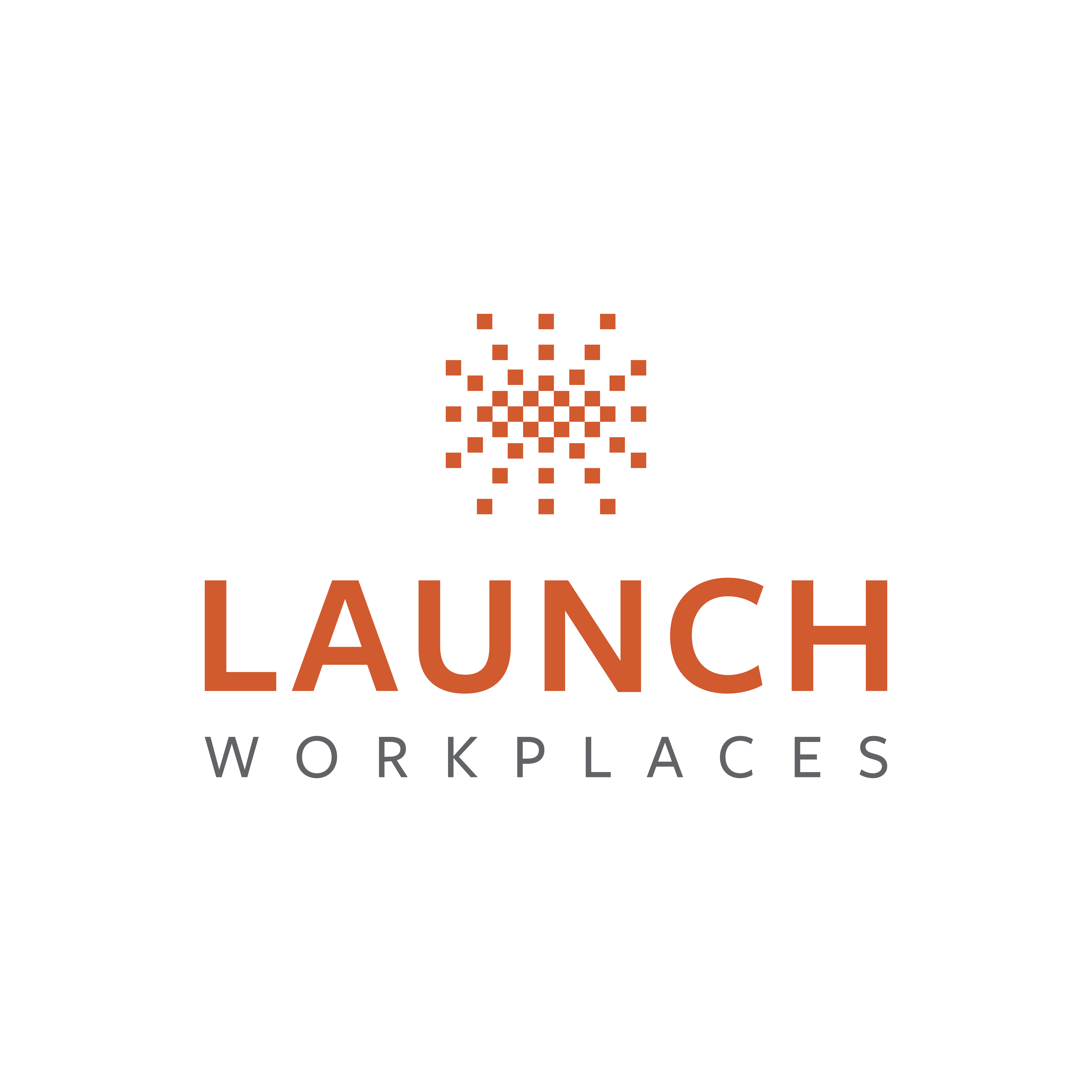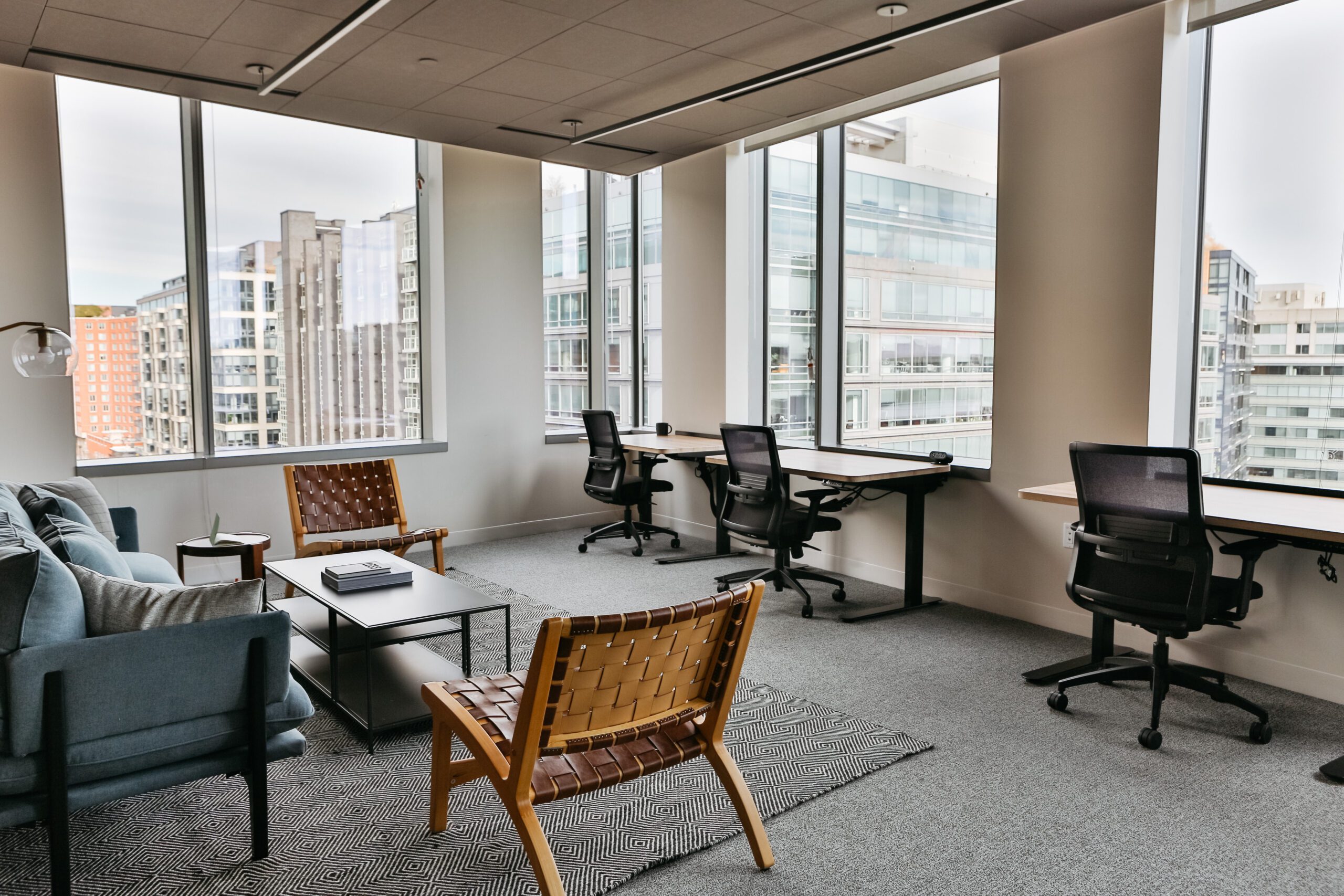
Updated: September 16, 2025
For many businesses, large and small, office space is one of the most significant line items on the balance sheet. So, if you’ve found yourself wondering, “How much does it cost to rent an office space?” you’re not alone.
The answer isn’t one-size-fits-all—it depends on factors like location, size, amenities, and market demand.
This article breaks down what drives the numbers and how to estimate costs for your business.
How much does it cost to rent an office space?
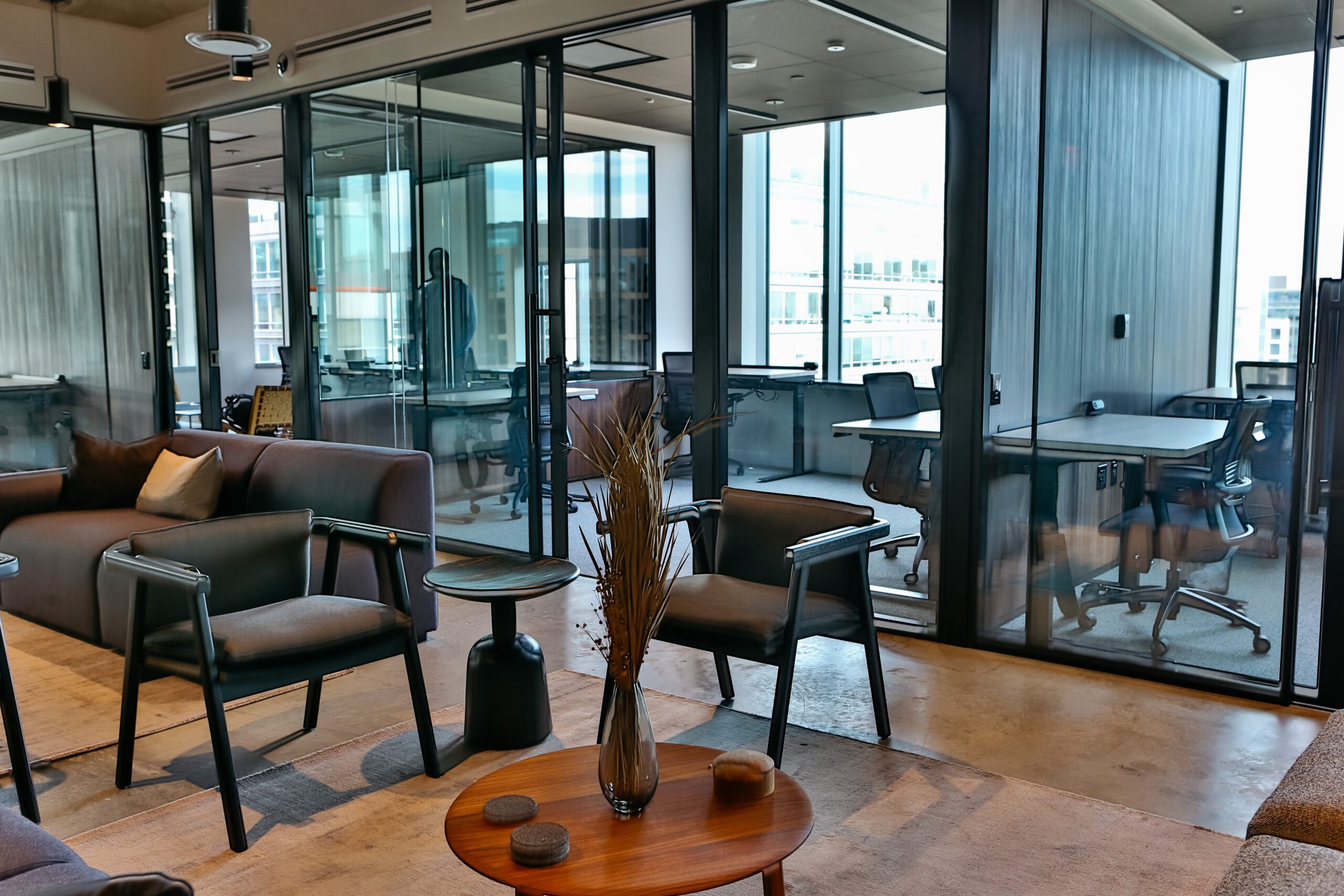
Here’s the short answer: it depends. Office rent isn’t a one-size-fits-all figure you can pluck from Google. The actual number is shaped by how you choose to structure your space and lease.
Most businesses will look at costs through two common models:
- Price per square foot: Traditional office leases are typically priced this way. Multiply the average cost per square foot in your market by the amount of space your team needs (a common rule of thumb is about 75 square feet per person).
- Membership or package pricing: In flexible office spaces like Launch Workplaces, pricing is bundled. Instead of paying separate line items for rent, utilities, and amenities, you’ll pay one predictable monthly rate that covers it all.
By weighing these two approaches—market averages vs. all-inclusive memberships—you can ballpark what you’ll be paying and decide which model makes the most sense for your business.
The 7 core components of office space cost
When you see a rent quote, it rarely tells the whole story. The true cost of office space goes well beyond the base price per square foot.
Here are the seven main components that shape your final monthly bill.
1. Base rent
This is the starting point: the cost of the square footage itself. It sets the foundation for your lease, but it doesn’t account for everything you’ll be paying.
2. Operating expenses
Most traditional leases require tenants to cover building operations, from heating and cooling to janitorial services and general maintenance.
These costs can shift month to month, which makes them hard to predict.
3. Common area maintenance (CAM) fees
Lobbies, hallways, landscaping, elevators, and parking areas all need upkeep. CAM fees allow landlords to spread those expenses across tenants, adding another line item to your rent.
4. Property taxes and insurance
In many cases, especially with triple net (NNN) leases, you’ll also pay a proportionate share of the building’s property taxes and insurance.
5. Build-outs and improvements
Customizing a space to meet your business needs often comes at a cost. Whether it’s new flooring, upgraded lighting, or IT infrastructure, tenant improvements rarely come free.
6. Furniture, equipment, and technology
Traditional leases don’t typically include desks, chairs, phone systems, or high-speed internet. These essentials are additional expenses you’ll need to budget for.
7. Permits and compliance
Depending on your industry and location, permits, inspections, and accessibility upgrades may also factor into the total cost.
What Is the Average Price of Office Space in the US?
Another big factor in the cost of office space is geography. Prices vary widely depending on the market, but national averages can give you a benchmark for planning.
Here’s what businesses are paying in major U.S. markets in 2025:
New York City: $75–$90+ per square foot
San Francisco: $70–$85+ per square foot
Washington, D.C.: $50–$65 per square foot
Los Angeles: $40–$60 per square foot
Miami: $35–$50 per square foot
Chicago: $30–$45 per square foot
Dallas: $30–$45 per square foot
Atlanta: $28–$40 per square foot
These figures reflect Class A or high-quality Class B spaces in central markets. Suburban locations or lower-tier buildings often come at a discount, while prestigious downtown addresses drive costs higher.
So, what’s your big takeaway?
Coastal cities command the highest rates, while Sunbelt and midwestern markets generally offer more value for money. But averages only tell part of the story.
Your true cost will depend on five core factors.
5 Factors That Influence the Cost to Rent Office Space
Beyond averages and line items, the real cost of office space is shaped by a handful of practical factors. These are the considerations that most directly impact what you’ll actually pay.
1. Location
First and foremost, where are you looking for an office? Are you located in a major hub city like New York or San Francisco, a smaller city, or a more suburban market?
As a rule of thumb, the bigger the city, the stronger the real estate market and, in turn, the higher the cost to rent an office space there.
The cost to rent an office space can also be influenced by location-specific factors, such as:
- Safety and neighborhood
- Access to major roadways and public transportation
- Proximity to local amenities such as restaurants and shops
If you want an office space at the heart of the action in a major city, the cost to rent an office space might be higher than if you’re looking for a spot that’s in a quieter area or smaller town.
2. Proximity to the Local Central Business District
As an extension of the previous point, the office’s proximity to the local central business district will significantly impact the cost to rent an office—and this is true whether you’re in a big city or a small town.
Having an office in (or close to) the central business district can be convenient for networking, connecting with clients, and attending meetings. It also offers a sense of prestige.
Because of this, offices in business districts tend to be a bit more expensive due to the convenience and prestigious image.
At Launch Workplaces, we offer flexible workspace options in a variety of markets, from urban to suburban, throughout Maryland, Cleveland, and Washington, DC.
3. Size
The cost to rent an office is calculated on a per-square-foot basis. So, it stands to reason that larger offices will be more expensive than smaller ones.
That being said, you may find economies of scale with bigger spaces, potentially reducing the cost to rent an office proportionately.
But square footage isn’t the only consideration. You might incur additional costs above and beyond your rental rate.
In a traditional office space, you’ll likely need to cover the cost of things like heating, cooling, cleaning, and maintenance. These factors can all influence the cost to rent an office space.
However, if you’re renting a flexible office space, these fees will likely be included in your monthly membership fee, meaning you won’t be facing variable costs each month—the cost to rent an office space will be all-inclusive.
4. Amenities
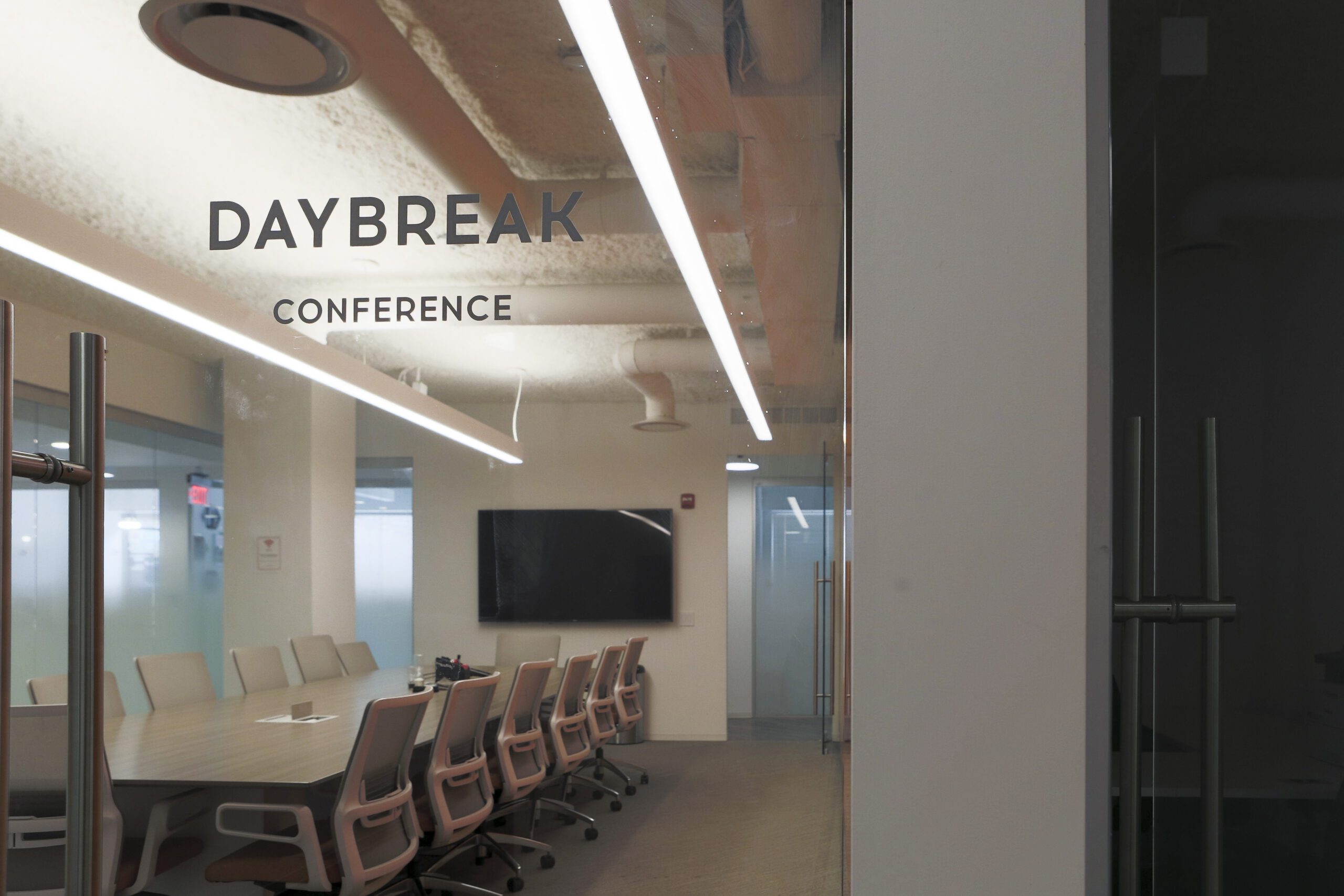
When you’re wondering, “How much does it cost to rent an office?” you should also consider what exactly you want in your office.
Amenities play a big part in influencing the cost to rent an office space.
Think of it this way: does your office need to have its own private meeting or conference room or kitchen?
If so, you can expect your costs to surge.
On the other hand, a bare-bones workspace with only the essentials will be a bit more budget-friendly.
If you want access to top-tier amenities but don’t want the price tag that comes with them, flexible office spaces like Launch Workplaces are a great option.
For example, you can get your own private office for yourself or your team and get access to amenities like:
- Parking
- Reception and on-site support
- Mail services
- Conference rooms
But since these amenities are communal, you’re not stuck paying to have them in your own workspace, even when you’re not using them.
5. Market Demand
Let’s look at basic economics and their impact on the cost to rent an office space.
If there’s a high level of demand for local office space and the stock is relatively low, you can expect your pricing to increase. In a traditional office lease, the landlord might even increase prices to meet “market rates.”
On the other hand, you can probably save a few bucks if you’re looking for office space in an area where demand is low, and availability is abundant—but there’s probably a reason why this is the case.
The problem is that when you’re looking for office space, you probably don’t have the luxury of trying to time the market.
So, you’ll have to make a decision based on many other factors in this equation.
The cost to rent an office space: traditional office space vs. flexible office space
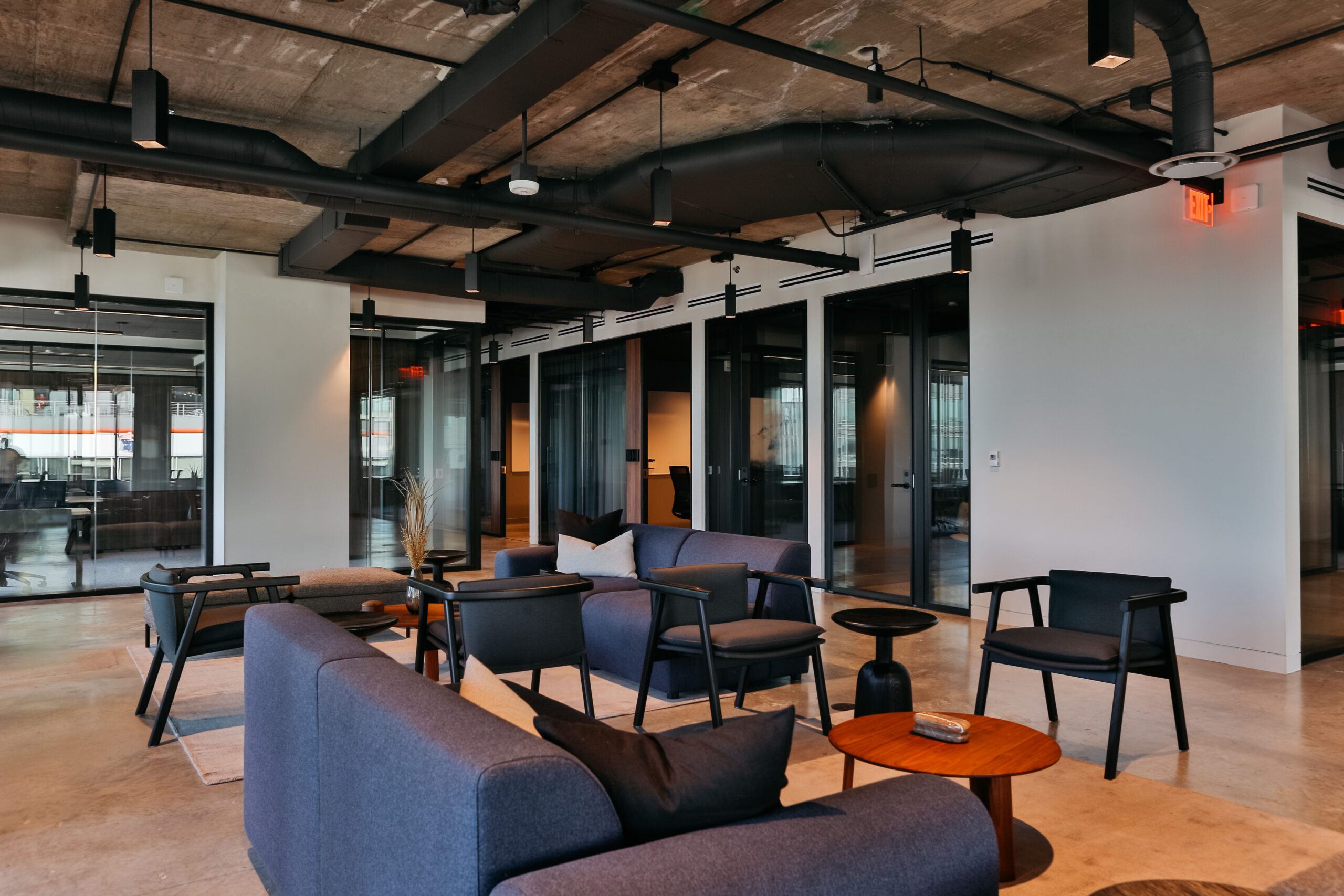
When you’re looking for a workspace, you generally have two options:
- Traditional office leases
- Flexible office spaces
The differences between these two models will influence your cost to rent an office space.
Traditional office spaces are a more significant financial investment than coworking spaces.
Why?
Because in a traditional office space, you’ll likely need to sign a multi-year lease, and you’ll probably be responsible for:
- Upgrading the space to meet your needs
- Furnishing it
- Setting up your tools, hardware, and IT infrastructure
- Running and managing the space
- Cleaning and maintaining it
- Handling any fixes or issues
While you won’t need to share any of the amenities, you also won’t be able to share any of the costs.
On the other hand, flexible office space can generally save you money in the long run. You may pay slightly more with your monthly membership, but you won’t be required to cover any of the costs listed above.
You’ll also be able to secure more flexible lease terms, meaning you won’t be locked into a three-to-five-year rate if your business needs change.
When it comes to calculating the cost to rent an office space, there’s no one-size-fits-all answer. It will vary depending on a variety of factors.
But by understanding these factors—as well as the options available to you—you’ll be better equipped to find the perfect office space at a price point that fits within your budget.
8 factors to consider when calculating your office space needs
Before you sign on the dotted line, it is worth stepping back and calculating exactly what kind of space makes sense for your business.
Looking at square footage alone does not tell the whole story. Location, building type, and future needs all play into the true cost of an office.
1. Location
Not all square footage is created equal. As you saw earlier, a thousand square feet in downtown Washington, DC, carries a different price tag—and a different level of visibility—than the same space in a suburban business park.
Think carefully about where your clients, employees, and partners are based. A more central location may boost convenience and credibility, but it will also drive your rent higher.
2. Grade of building
Buildings are often grouped into categories, with Class A representing premium spaces, Class B covering solid mid-tier options, and Class C generally being more basic.
Class A properties come with modern finishes, strong amenities, and higher rents. Class B and C buildings can save money but may require compromises on image or infrastructure.
3. Determining required square footage
A good rule of thumb is to allocate around 75 square feet per employee.
Multiply that by your current headcount to set a baseline. Then, consider whether you need extra space for dedicated meeting rooms, storage, or collaboration areas.
Flexible office providers often let you start smaller and expand as needed, which can be more cost-effective than locking yourself into more space than you currently use.
4. Evaluating business needs and growth
Your office should work for the team you have today while accommodating the team you plan to build tomorrow. Rapidly growing startups may want more flexibility, while established businesses might feel comfortable committing to a larger footprint.
If growth is part of your strategy, consider whether your provider can offer a path to scale without forcing you to move again.
5. Additional costs and fees
Beyond base rent, be prepared for add-ons. Traditional leases may include utilities, internet, janitorial services, and security as separate line items.
Flexible office memberships often roll these into a single monthly fee, making it easier to predict and control expenses.
6. Maintenance and operational expenses
Cleaning services, repairs, and general upkeep can add up quickly. In a traditional lease, those responsibilities often fall on the tenant.
In a flexible workspace, they are included in your membership, so you do not have to manage vendors or worry about fluctuating costs.
7. Taxes, insurance, and common area maintenance
Triple net (NNN) leases usually require tenants to cover a share of property taxes, insurance, and common area maintenance. These charges can significantly increase your monthly outlay and are worth factoring into your total budget from the outset.
8. Furnishing and setup costs
Office furniture, IT systems, and equipment are rarely included in a traditional lease. Setting up a new space from scratch can be expensive and time-consuming. At Launch Workplaces, private offices come fully furnished and ready to go, saving you both money and hassle.
Tips for how you can reduce office space rent costs
If the numbers feel daunting, you are not alone. Many businesses explore creative ways to cut down on their office costs without sacrificing the essentials.
Negotiate terms with landlords
Landlords often have more room to negotiate than tenants realize. Understanding market trends, vacancy rates, and competing properties gives you leverage. Key strategies include:
- Understanding lease clauses: Read every clause carefully. Some hidden fees or renewal terms can cost you significantly over time.
- Leveraging market knowledge: If you know that vacancy rates are high in your area, use that information to negotiate better terms or concessions.
- Long-term commitments vs. flexibility: Some landlords offer lower rent in exchange for longer lease terms. That may work for stable businesses, but startups and growing teams often benefit more from flexible arrangements like those at Launch.
Select a closer location
A prestigious downtown address may look great on paper, but it comes at a premium. Choosing a location that is closer to your employees, customers, or suppliers can cut costs without undercutting convenience.
Share space or sublease
Another way to keep costs down is by sharing space with another business or subleasing part of your office. This approach can offset expenses, though it requires careful coordination.
Flexible workspaces offer a simpler alternative by giving you access to shared resources without the headaches of managing another tenant.
Office space rental cost insights everyone should keep in mind
Office space will always be a major expense, but the way you approach it makes all the difference.
Traditional leases come with long-term commitments, variable fees, and a heavy upfront investment. Flexible workspaces like Launch give you a professional environment with transparent pricing, shorter terms, and built-in amenities that reduce the hidden costs.
When you understand the components of office pricing, calculate your true needs, and explore ways to reduce costs, you can make a smarter choice for your business.
At Launch Workplaces, that means moving into a space that fits your budget today while leaving room to grow tomorrow.
FAQs about office space costs
If you are still sorting through the details, you are not alone. Businesses often ask similar questions when weighing the cost of office space, from how to budget for setup to whether flexible workspaces really save money. Here are some of the most common questions we hear.
How can businesses optimize space utilization to reduce the cost of renting office space?
Start by using your square footage more efficiently. That might mean adopting an open layout, rotating hybrid schedules, or taking advantage of shared resources like meeting rooms instead of dedicating permanent space you only use occasionally.
Flexible workspaces make it easy to scale your footprint up or down so you only pay for the space you actually need.
What initial setup costs should businesses consider when renting a new office space?
Traditional office leases usually require a hefty upfront investment. You may need to budget for furniture, IT infrastructure, cleaning services, and even tenant improvements like flooring or lighting.
With private offices in a flexible workspace, most of these costs are absorbed into your membership. That way, you move into a turnkey environment that is ready on day one without surprise expenses.
How can businesses effectively negotiate lease terms to reduce rental costs?
If you are looking at a traditional lease, do your homework on market conditions, understand every clause, and push for concessions that matter most to your business.
In some cases, you may get better pricing with a longer commitment, while in others, flexibility will save you money over time.
Many businesses sidestep this challenge altogether by choosing coworking and flexible workspaces, where transparent pricing and shorter terms make negotiation less of a hurdle.
Want predictable costs and space that grows with your business? Book a tour of your local Launch Workplaces location today and see how flexible office space can work for you.

